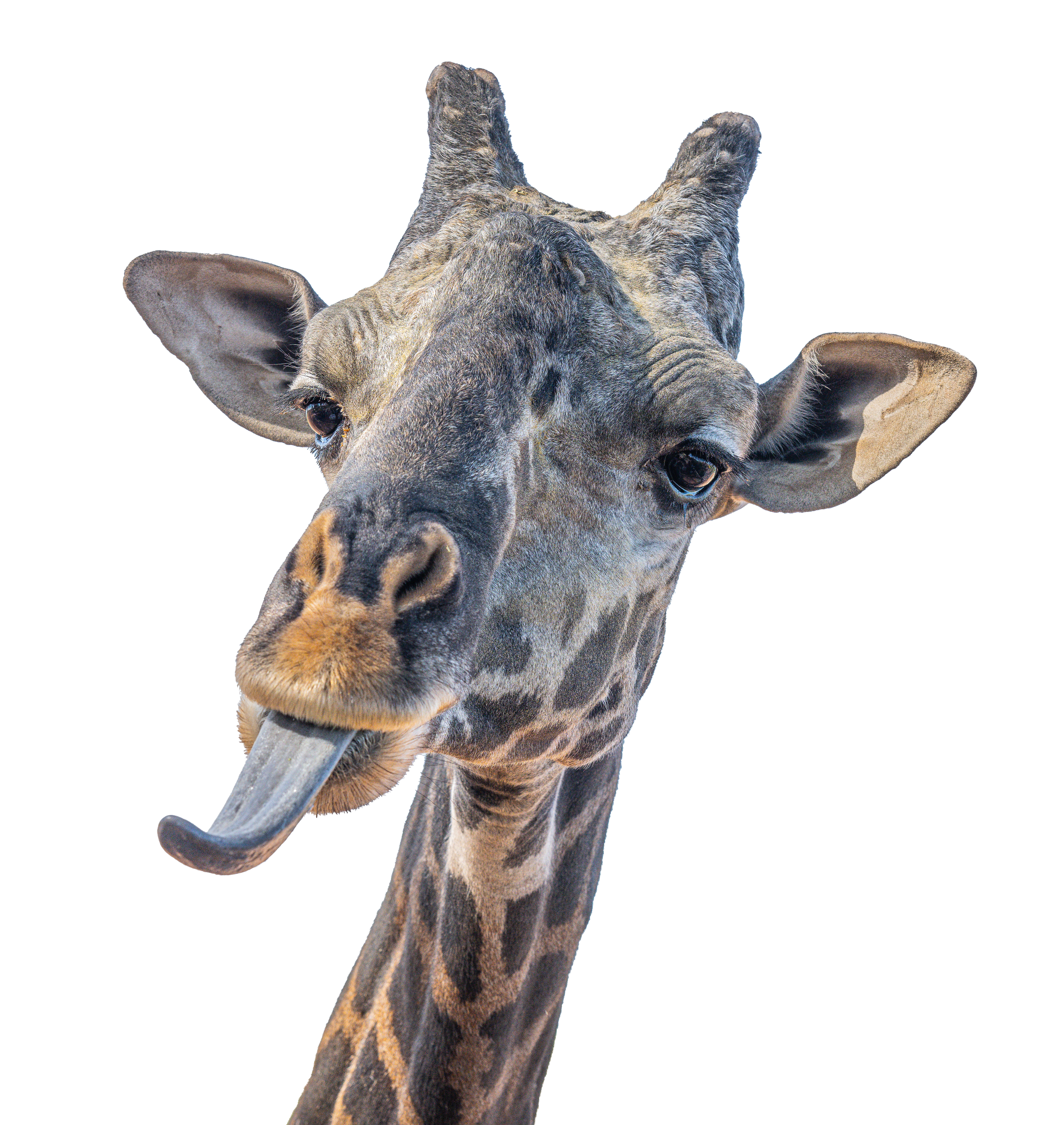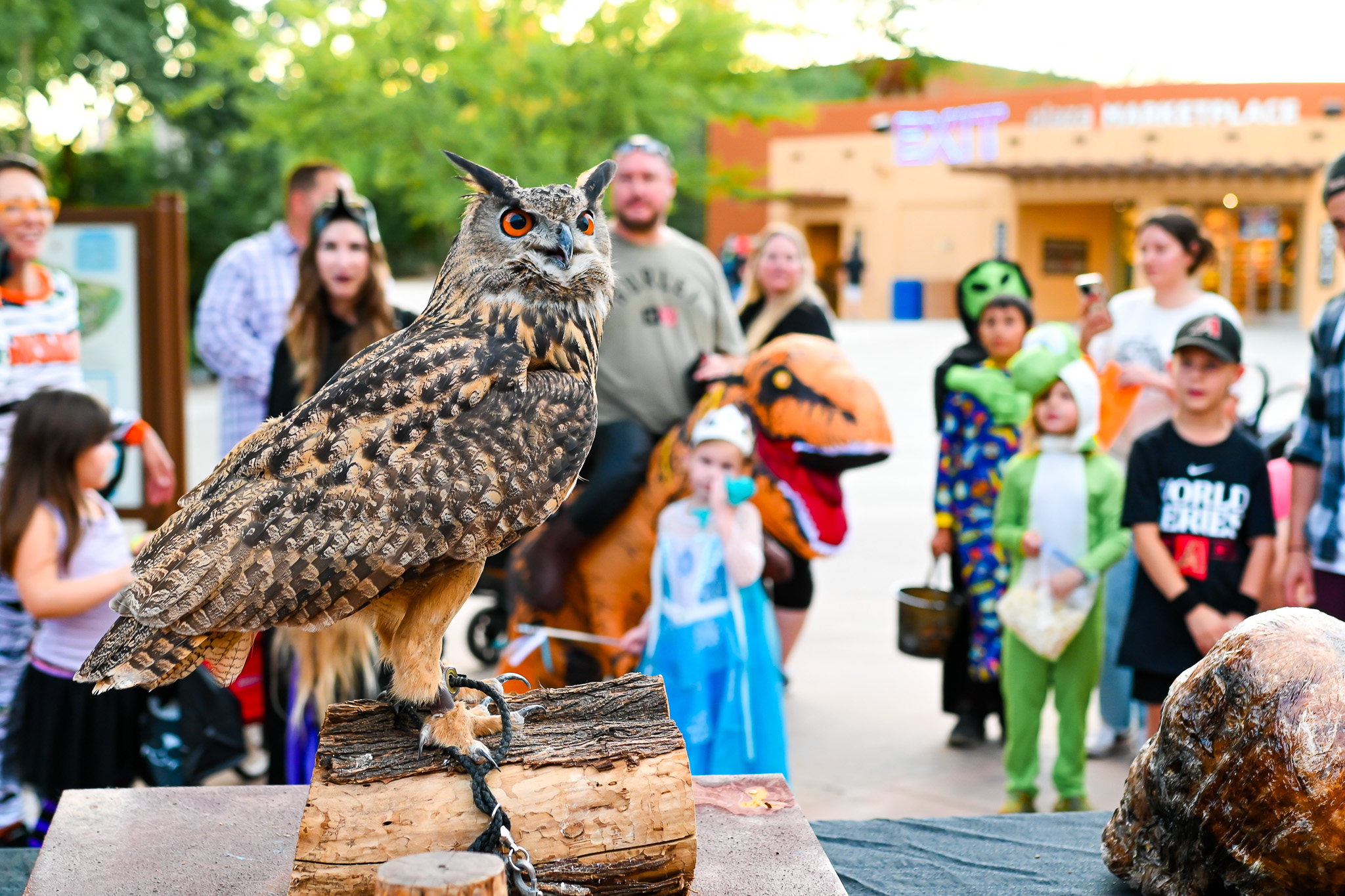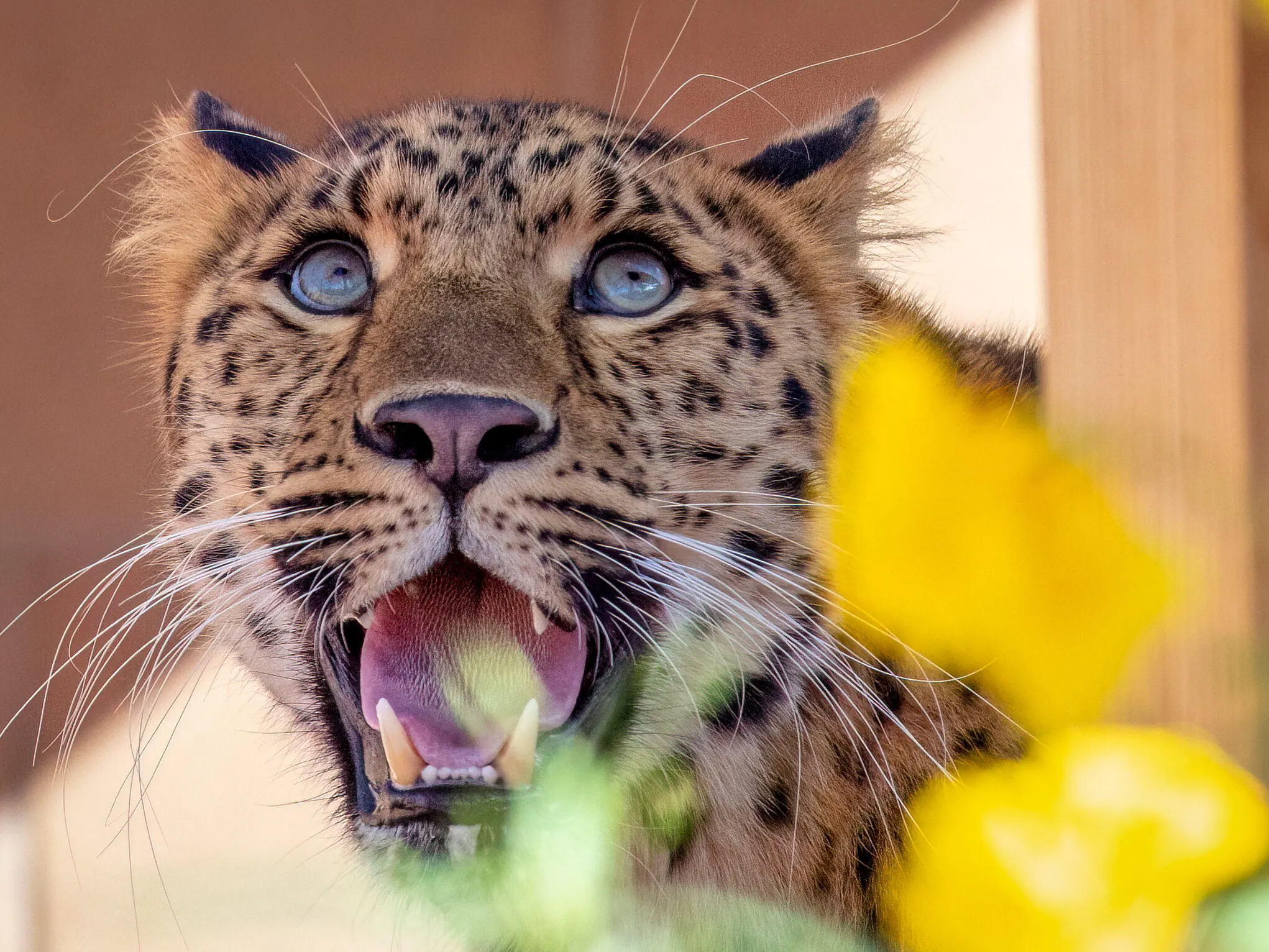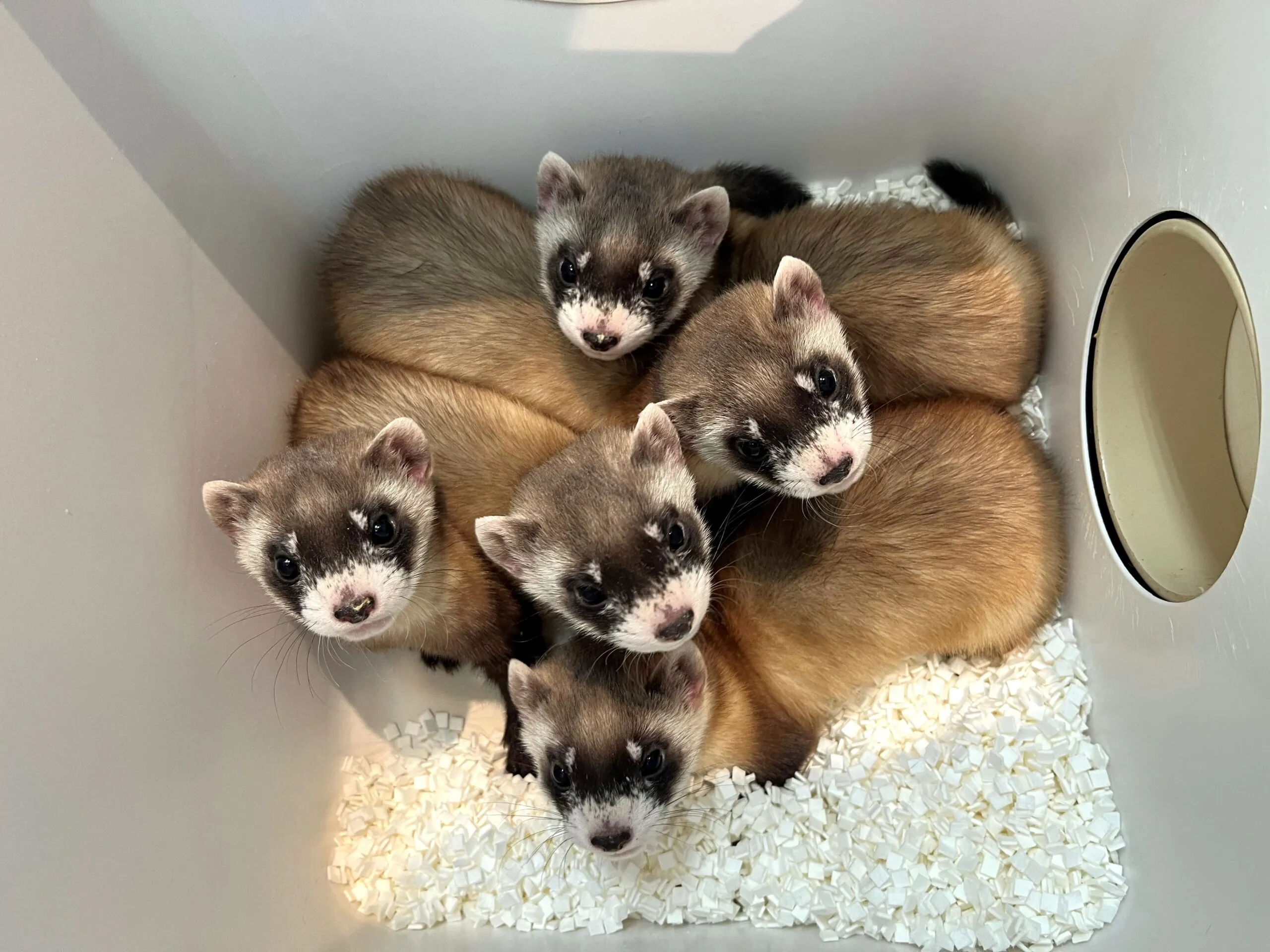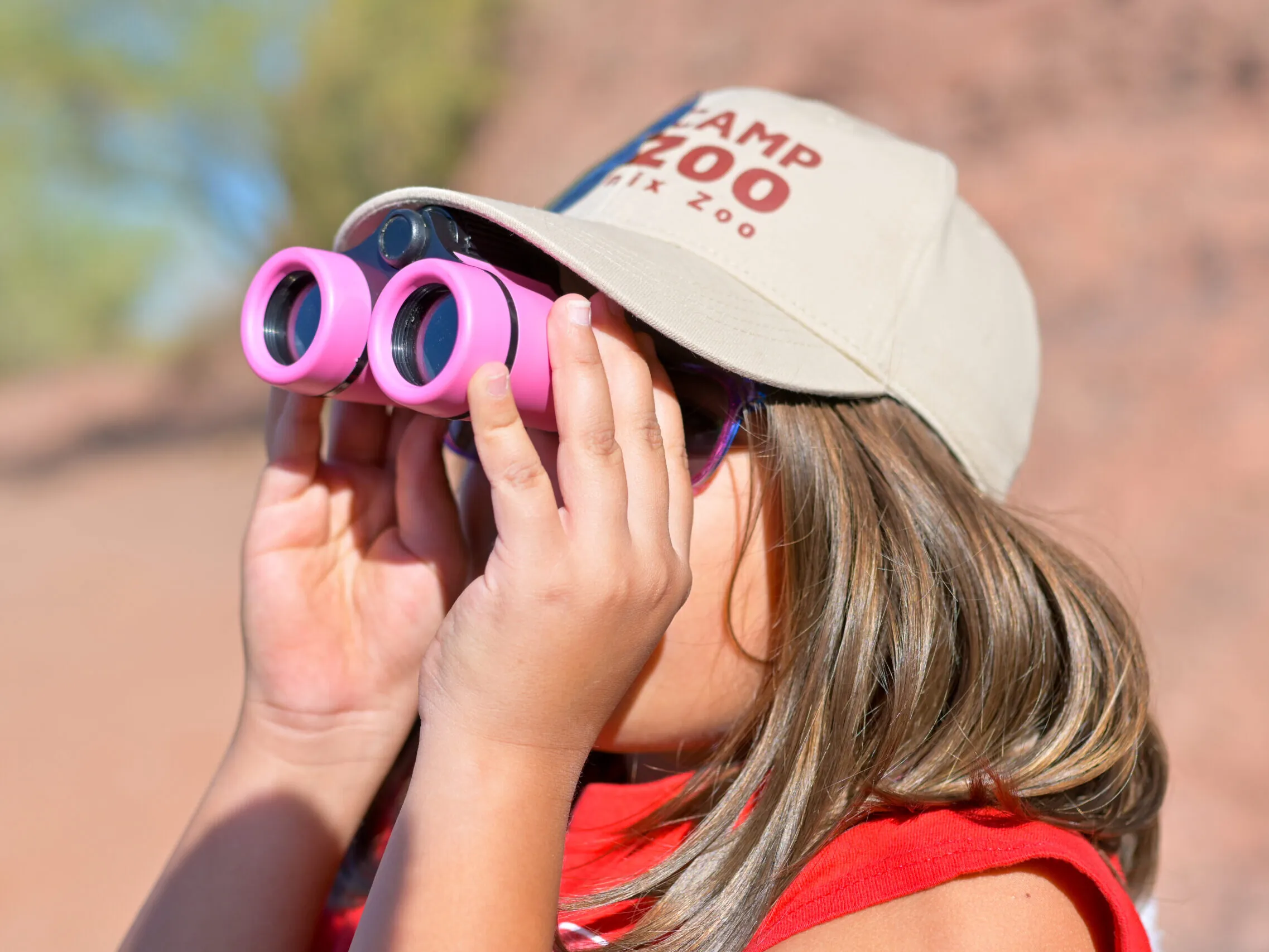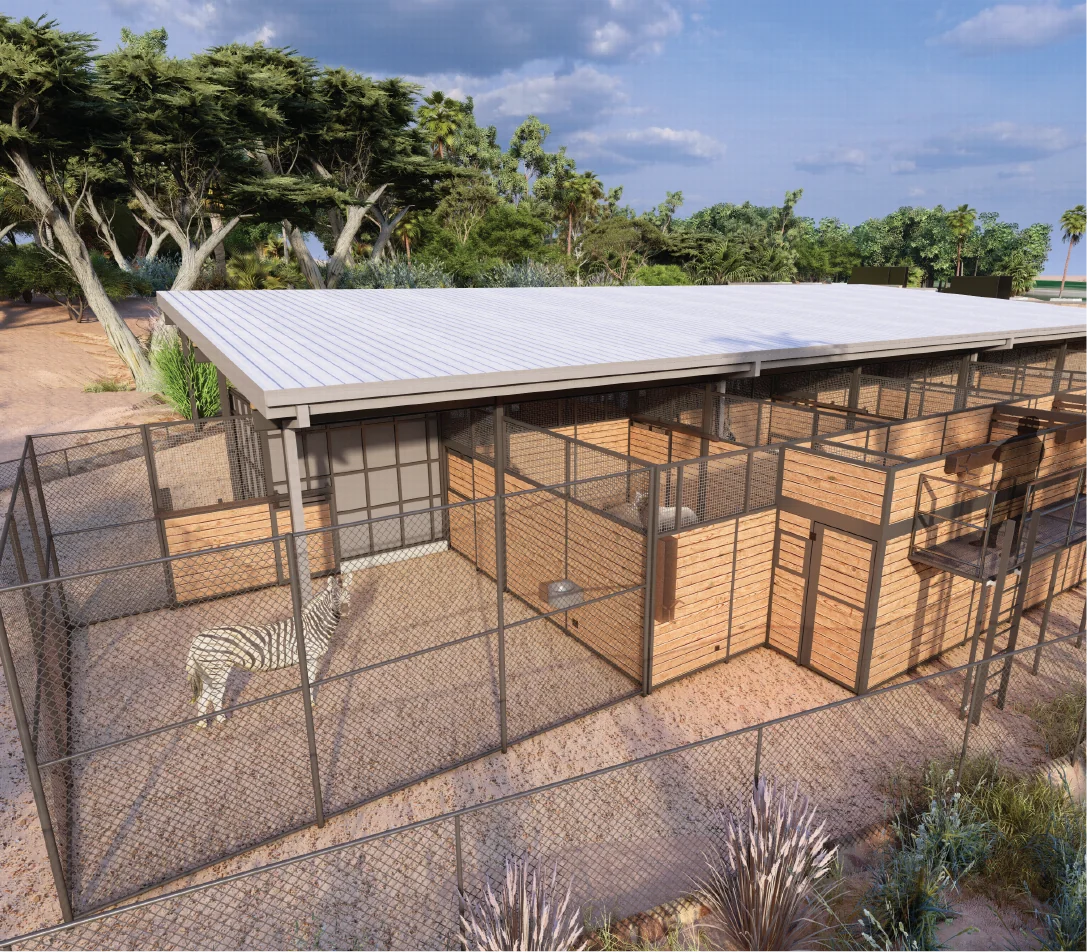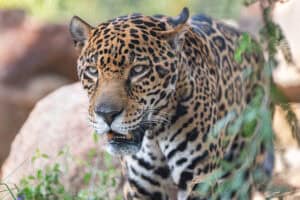Chiricahua
leopard frog
- English
- Spanish
Chiricahua leopard frogs are native to higher-elevation areas of Arizona, New Mexico and northern Mexico. They are listed as Threatened under the U.S. Endangered Species Act. Disease – especially from chytrid fungus – is a major threat to these frogs. Invasive non-native species such as bullfrogs have also caused population declines, along with habitat loss and drought.
Like other amphibians, Chiricahua leopard frogs play important roles in their ecosystem. They control insect populations, including mosquitos, and they serve as a food source for many different animals. As an indicator species, their presence or absence in an area can also warn us about water quality issues.
threats
habitat loss/
degradation
disease
Climate change/
severe weather
invasive species
how we help
at the zoo
Since 1995, the Phoenix Zoo has been raising and breeding Chiricahua leopard frogs for release to the wild. We head-start fertilized wild egg masses, protecting the developing frogs through the life stages in which they are especially vulnerable in the wild.
We also house adult frogs at the Zoo’s Arthur L. and Elaine V. Johnson Conservation Center and produce egg masses from these genetically important lineages. Working with our conservation partners, we then release Chiricahua leopard frogs to the wild in their native range.
Since the program began, over 29,000 tadpoles, juveniles, and adult frogs raised at the Phoenix Zoo’s Conservation Center have been released, helping recover wild populations.
in the field
We help our conservation partners release Zoo-raised Chiricahua leopard frogs to sites in Arizona and monitor wild populations in the state. The data our teams collect during surveys help us understand whether reintroduction and other recovery efforts are successful.
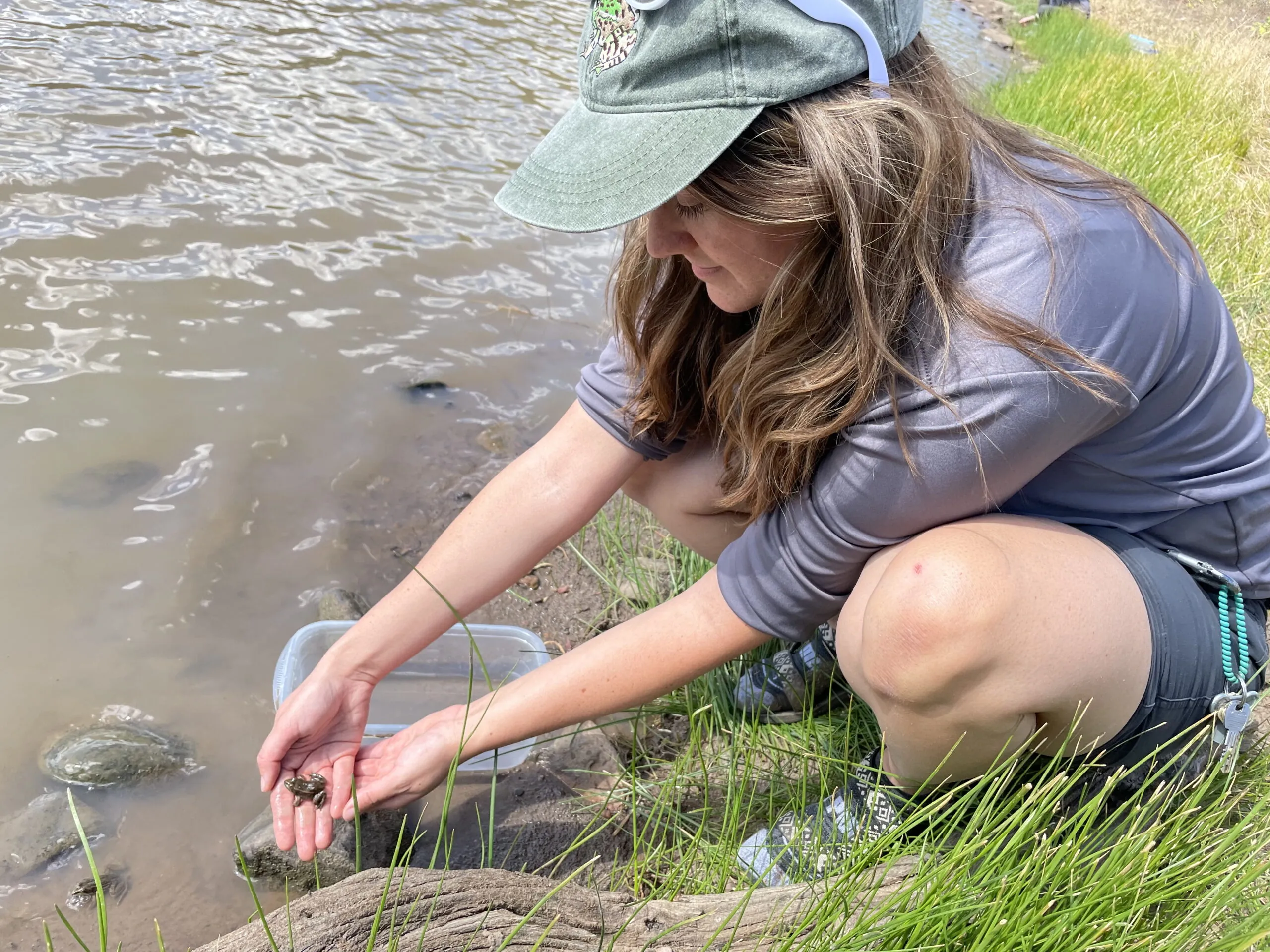
conservation partners




Plan your visit today!
The Phoenix Zoo is one of the largest non-profit zoos in the U.S., caring for over 3,000 animals, with nearly 400 species represented, including many threatened/endangered species.
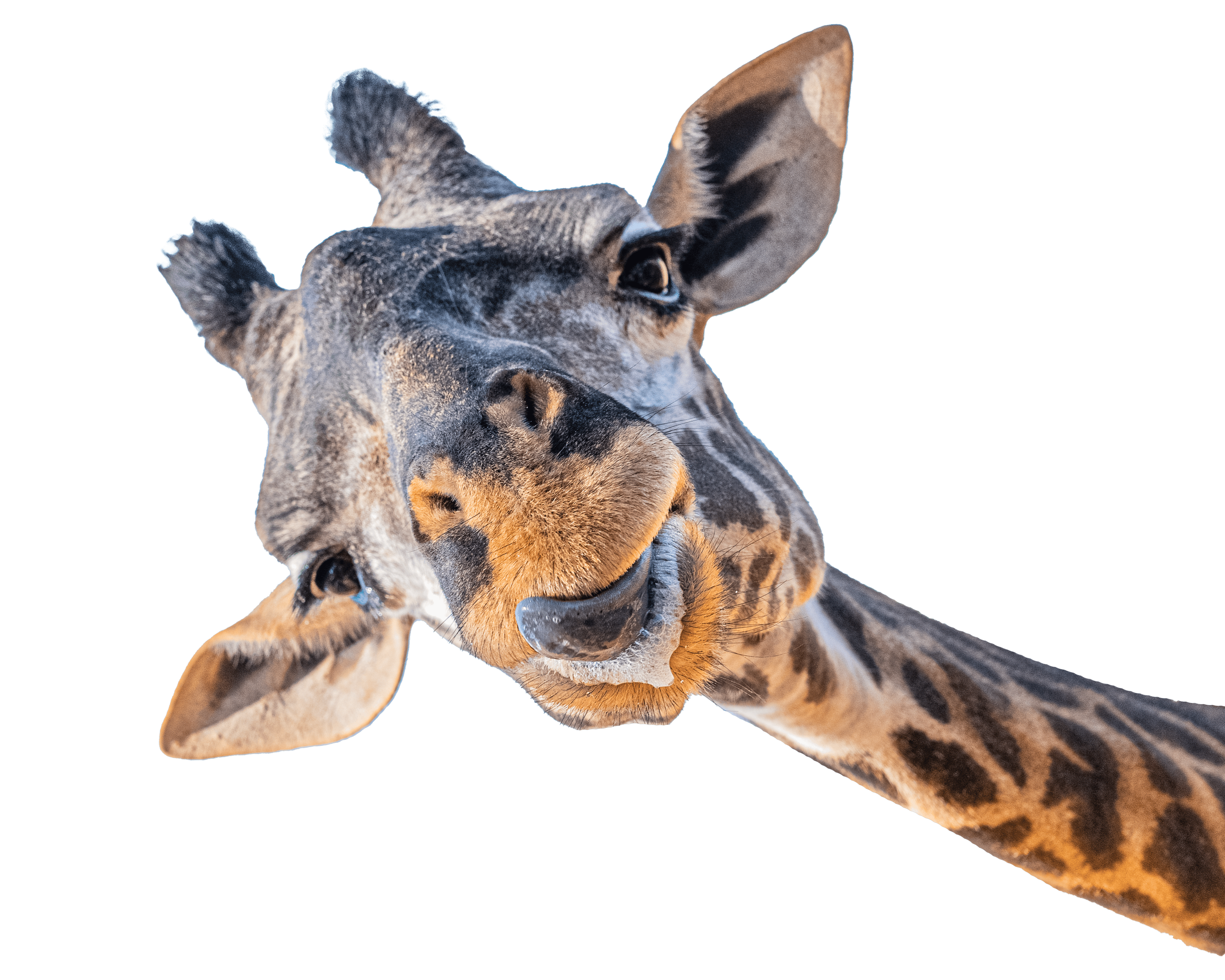
Plan your visit today!
The Phoenix Zoo is one of the largest non-profit zoos in the U.S., caring for over 3,000 animals, with nearly 400 species represented, including many threatened/endangered species.
